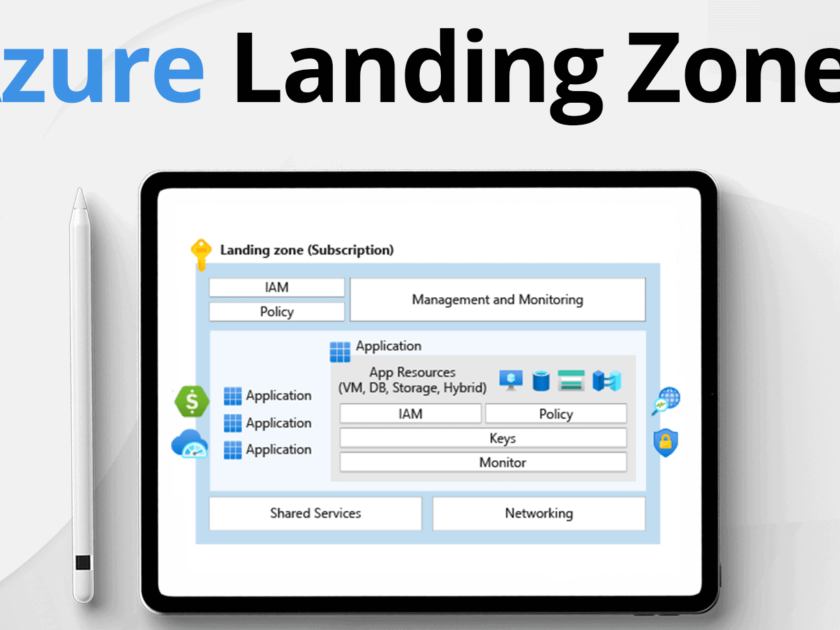For Speedy and Secure Cloud Infrastructure
Increasing numbers of organisations are shifting their workloads to cloud environments, indicating that cloud computing is becoming the technology of the future. The cloud offers numerous advantages to businesses, including increased productivity, the ability to scale up or down as needed, and a more agile infrastructure. However, businesses who want to migrate to the cloud need the proper plan. It is also essential to establish an effective operational and governance model that aligns with the enterprise’s aims and objectives. Consequently, establishing an effective landing zone is vital, since it may serve as the journey’s cornerstone.
As businesses migrate to Microsoft Azure, there is no question that Azure’s footprint is expanding. Most organisations are in quest of the best practises of Azure Cloud Adoption. Typically, Azure landing zones assist organisations with their first footprint and take into consideration enterprise-level size, security, governance, networking, and identity. Azure landing zones may be established from scratch or incorporated into existing settings, and they provide a scalable method for growing your cloud environment. This modular approach is backed by common design areas that help secure the Azure cloud environment for the future development of the organisation and the scope of its workloads. If you are new to Microsoft Azure, CDWT can simplify the deployment of landing zones within Azure, in addition to providing advanced features and support, while adhering to the Cloud Adoption Framework (CAF) tenets.
Advantages of Azure Landing Zone
Reduced Risk and Enhanced Security.
Accelerate Cloud Migration, Modernization & Boost Innovation.
IT Departments are Liberated of Deployment Burdens
How are Landing Zones in Azure Constructed?
Before beginning development on the Azure Landing Zone, it is essential to understand how businesses choose to deploy them, followed by the design areas and configuration choices. Here are some of the design elements that contribute to the formation of landing zones.
Deployment Options
Identity
Resource Organization
Business Continuity and Disaster Recovery (BCDR)
Microsoft Azure Cloud Adoption Framework
The Microsoft Cloud Adoption Framework for Azure is meant to help organisations with the adoption and development of diverse business and technology initiatives that will aid in their cloud success. The framework provides businesses with the best practises, narrative, tools, direction, and documentation required to achieve the short-term and long-term technology goals that influence business results.
Strategy
Plan
Ready
Migrate
Innovate
Govern
Manage
Advantages of Azure Landing Zone
Speed & Scalability
Security & Compliance
Flexibility
Better Cost


To begin the journey with Azure Landing Zones, organisations must first complete the three stages outlined below inside CAF:


The Implementation Process
Stage 01
-
Discovery: Consult with Azure specialists to comprehend the Azure landing zone. Your present environment will be evaluated by the specialists, and a deployment plan will be determined.
-
Stage 02
-
Deployment: This step concludes the deployment and documentation of the landing zone. CDWT will establish the guidelines and regulations for your company workload transfer based on its technological needs.
-
Stage 03
-
Knowledge Transfer: The CDWT professionals will inform the enterprise's IT staff of the deployment's specifics.
-
Azure Landing Zone – FAQ’s
With Azure landing zones, organisations can enable enterprise-scale greenfield development and application migrations.
Focus intently on desired business results
Specify how you want to use your Azure Landing Zone.
Place the proper team in place.
Note all needs and prerequisites
Obtain early support from all important stakeholders and teams.
Choose and execute a light house project
Adopt a cloud native methodology
Clearly establish and outline specific delivery goals
Develop a robust security and compliance methodology
Automatize the Landing zone's analysis and construction
Create a Landing Zone for Testing on Azure
Track, measure, and show your framework for security and compliance
Deal with security and compliance warnings as soon as they are generated.
Go with lightweight design and incremental delivery.




